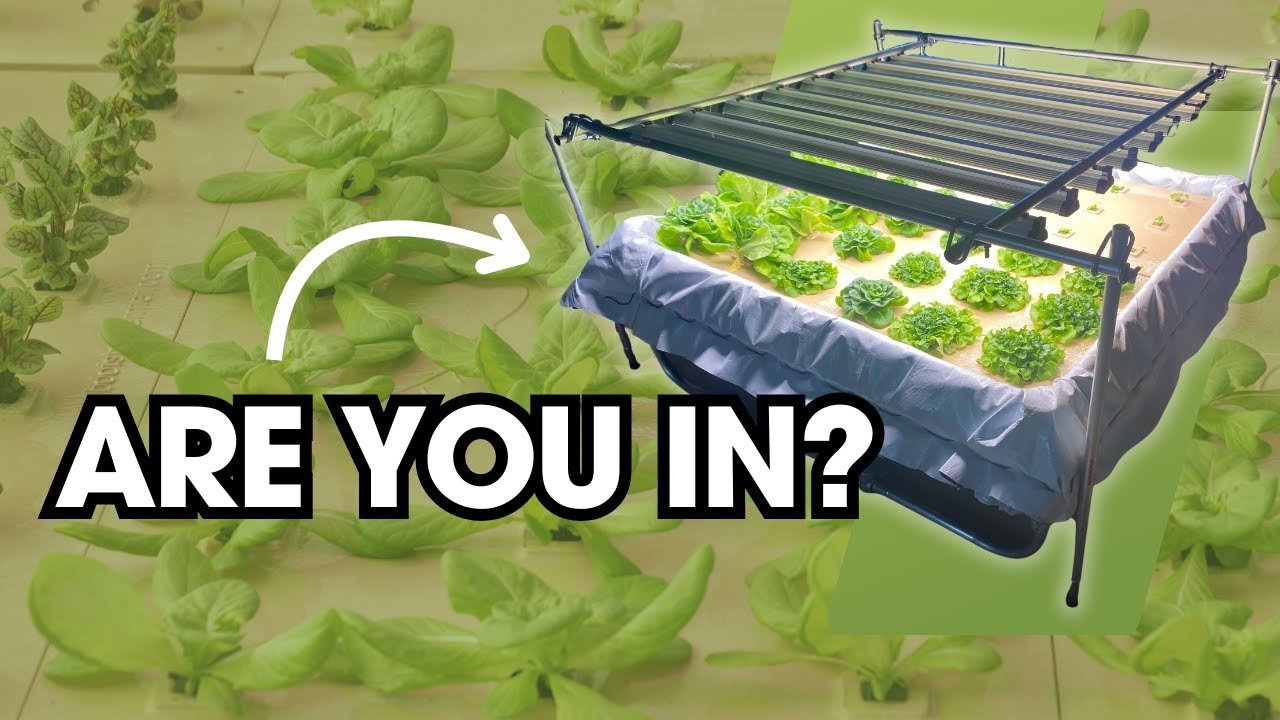My Backyard Aquaponics Adventure: Fish, Greens, and More than a Few Mistakes
Sitting down for coffee with my neighbor last week, we found ourselves belly laughing about my latest endeavor: building an aquaponics system in my backyard. When I first brought up the idea, I could see the glint of skepticism in their eyes. "Fish and plants in one system?" they said, a tease hanging on their lips. It sounded like the perfect crazy project for a small-town weekend, and who doesn’t want fresh greens and fish at home?
The Spark of Inspiration
One dreary afternoon, scrolling through Pinterest while daydreaming about self-sustainability, I came across these beautiful images of aquaponics systems. Fish gliding serenely in tanks while lush lettuce and vibrant herbs flourished in their growth beds above? I was sold. I thought, “Why not? It can’t be that hard.” Little did I know, my backyard would soon double as a scene from “Survivor: Home Edition.”
Excited, I rummaged through my shed for materials. I found an old plastic storage bin that had seen better days and some PVC pipes left over from a previous DIY project. Those would have to do. I still had a few empty fish tanks from my teenage aquarium phase, so I decided to repurpose one of them. “Perfect!” I thought, "I’ll just use what I have."
The Fishy Decision
Next came the fish. Now, I’m no ichthyologist, but I figured goldfish would be a safe bet. They’re hardy little guys, right? I thought it’d be charming to whip together a small pond ecosystem. I trotted off to the local pet store, proudly cradling a bag of bright orange fish—the kind kids point at with glee. I named them things like “Guppy McFishface” and “Goldy.” I pictured them swimming around in a symbiotic paradise, nourishing the plants below.
The first week was bliss. The water shimmered in the sun, and the smell—well, it smelled distinctly like “fish tank,” but I was entirely convinced I had nailed it. My tomatoes started sprouting tiny little green orbs, and I could practically taste the salsa already.
The Green Monster
But as the days turned into a week, trouble started brewing. I took a stroll into my yard one afternoon and was greeted with an unholy sight. The water had become this murky shade of green, like something out of a science fiction horror movie. I practically gasped. “Oh no, the water turned green!” I shouted to my partner, who simply chuckled from the porch.
I dove into troubleshooting mode. Hours were spent online, googling “why is my aquaponics water green?” Turns out, I wasn’t maintaining the balance. Overfeeding the fish and not enough plants to absorb the nutrients—which, by the way, took me what felt like weeks to figure out. The plants were thriving a bit too much. I realized I needed to engage in some serious math and balance nutrient loads. Who knew college algebra would come back to haunt me?
The Fishy Mortality Rate
Just when I thought I was getting the hang of things, disaster struck. One morning, I found Guppy McFishface floating upside down. My heart sank. I frantically checked the water; it smelled even more off than usual. It turned out the water temperature was fluctuating too widely. I still remember standing over that tank, surveying the scene like a heartbroken detective. “I’m sorry, Goldy,” I muttered, feeling personally responsible for the little fishy lives.
It was a real slap in the face, a reminder that even the best of intentions sometimes lead to morbid outcomes. This whole aquaponics thing wasn’t just a playful hobby; it was a living system!
Learning the Ropes
After a few rounds of trial and error—like trying to figure out random pumps from my collection of garage junk and accidentally flooding the yard—I finally began to find my rhythm. I replaced fancy pumps with a simple submersible one, sturdy and reliable. I started tracking water quality, noting the pH levels and learning how to adjust them gradually.
I replaced my beloved, yet tragically inefficient fish with tilapia. A bit hardier, and they grow like you wouldn’t believe. And each time I lost a fish, I took it as a learning opportunity—albeit a devastating one. My plants began to thrive, eventually producing kale and basil, which I casually started sharing with the neighbors.
A Lesson in Patience
Fast forward to today, my backyard is less of a disaster zone and more of a vibrant living space. The smell of fresh herbs dances in the air, and there’s life swimming more comfortably in their tank. Sure, I didn’t get everything right, and let’s be real, I still have days where the water smells a bit funky, but you learn to adjust.
A Warm Takeaway
So, over that steaming cup of coffee with my neighbor, I reflected on my journey. “If you’re thinking about doing this,” I said, “don’t worry about getting it perfect. Just start. You’ll figure it out as you go.”
Laughter filled the air as I shared more fish tales and detailed all the unique lessons learned along the way. It wasn’t just about aquaponics; it was about life, flexibility, and the unexpected joy in homemade salsa from just a few plants swimming in fish-tank water.
If you’re feeling inspired, think about trying your own hand at this quirky venture. Join the next session to find out how you too can start on this wild path—or at least help me keep my fish safe! Reserve your seat here.







Leave a Reply